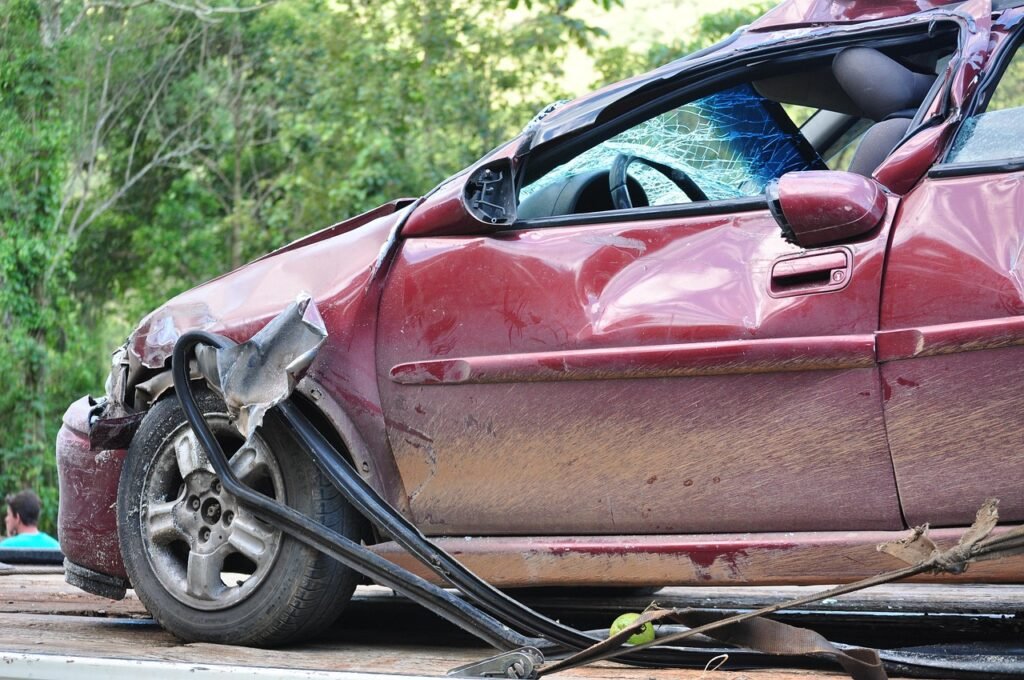
Comprehensive car insurance. The term itself suggests extensive protection, and that’s precisely what it aims to deliver. Beyond the typical coverage of collisions, this insurance shields your vehicle from a range of unforeseen events, offering peace of mind on and off the road. Whether it’s a rogue hailstorm, a fallen tree branch, or even theft, understanding the nuances of comprehensive coverage is crucial for every vehicle owner. This guide will break down the essentials, helping you determine if it’s the right choice for your needs.
What is Comprehensive Car Insurance?
Defining Comprehensive Coverage
Comprehensive car insurance, often called “other than collision” coverage, is an optional part of your auto insurance policy that covers damages to your vehicle caused by events other than collisions with another vehicle or object. Think of it as protection against the unexpected acts of nature and human beings that aren’t related to car accidents.
- It fills the gaps left by collision coverage and liability insurance.
- It covers a wider range of incidents, making it a broader protection for your vehicle.
- It usually has a deductible, which is the amount you pay out-of-pocket before the insurance covers the rest.
Key Differences: Comprehensive vs. Collision
It’s easy to confuse comprehensive and collision coverage, but understanding their differences is essential.
- Comprehensive: Covers damage from events other than collisions. Examples include: theft, vandalism, fire, hail, flooding, falling objects, and animal strikes.
- Collision: Covers damage to your car if you collide with another vehicle or object, regardless of who is at fault.
- Example: If a tree falls on your car during a storm, comprehensive coverage would likely cover the damages. If you back into a pole in a parking lot, collision coverage would apply.
Is Comprehensive Insurance Mandatory?
In most cases, comprehensive insurance is not mandatory. However, if you lease your vehicle or have an auto loan, your lender will likely require you to carry both comprehensive and collision coverage. This is because they have a financial interest in protecting the vehicle’s value.
- Even if it’s not required, consider the value of your vehicle and your risk tolerance.
- Older vehicles with low market value may not warrant comprehensive coverage.
- If you live in an area prone to severe weather or high rates of theft, it might be a wise investment.
What Does Comprehensive Insurance Cover?
Natural Disasters and Weather Events
Comprehensive insurance provides protection against a wide array of natural disasters and weather-related incidents.
- Hail: Hailstorms can cause significant dents and damage to your vehicle’s body. Comprehensive covers these repairs.
- Flooding: If your car is damaged by floodwaters, comprehensive will typically cover the cost of repairs or replacement.
- Fire: Whether caused by a mechanical issue, arson, or a wildfire, comprehensive will help cover the losses.
- Windstorms and Tornadoes: Damage from strong winds, fallen trees, and flying debris is usually covered under comprehensive.
- Example: Imagine a severe hailstorm hits your area, leaving your car riddled with dents. Your comprehensive insurance would kick in to cover the cost of repairs (minus your deductible), preventing a significant financial burden.
Theft and Vandalism
Unfortunately, theft and vandalism are common risks. Comprehensive insurance offers financial protection in these situations.
- Theft: If your car is stolen, comprehensive will cover the actual cash value of your vehicle (minus your deductible).
- Vandalism: Damage from vandalism, such as broken windows, keyed paint, or slashed tires, is covered.
- Example: If your car is stolen and never recovered, your comprehensive insurance will provide compensation for its value, helping you replace your transportation.
Other Covered Incidents
Beyond natural disasters and theft, comprehensive coverage extends to other less common, but still significant, events.
- Falling Objects: If a tree branch, construction material, or any other object falls and damages your vehicle, comprehensive will cover the repairs.
- Animal Damage: Hitting an animal, like a deer, is typically covered under comprehensive.
- Glass Damage: Some policies offer separate glass coverage or waive the deductible for windshield repairs or replacements. Check your policy details.
- Example: A large rock falls from a construction truck and cracks your windshield. Comprehensive coverage will help you get it repaired or replaced, often with a lower deductible (or no deductible at all for some policies) than other types of claims.
Factors Affecting the Cost of Comprehensive Insurance
Vehicle Value and Type
The value and type of your vehicle are primary factors influencing the cost of comprehensive coverage.
- Higher Value Vehicles: More expensive vehicles typically have higher premiums due to the increased cost of repairs or replacement.
- Vehicle Type: Certain vehicle types, such as sports cars or luxury vehicles, may have higher premiums due to their increased risk of theft or damage.
Location
Your geographical location plays a significant role in determining the cost of comprehensive insurance.
- High-Risk Areas: Areas with higher rates of theft, vandalism, or natural disasters will typically have higher premiums.
- Urban vs. Rural: Urban areas often have higher rates of theft and vandalism, leading to higher premiums compared to rural areas.
Deductible Amount
Your chosen deductible also affects the cost of your comprehensive insurance.
- Higher Deductibles: Choosing a higher deductible will lower your premium, but you’ll pay more out-of-pocket in the event of a claim.
- Lower Deductibles: A lower deductible means a higher premium, but you’ll pay less out-of-pocket for claims.
- Tip: Consider your financial situation and risk tolerance when selecting a deductible. A higher deductible is suitable if you can comfortably afford the out-of-pocket expense.
Driving Record
While comprehensive claims are generally not related to driving performance, your driving record can still influence your overall insurance rates.
- Clean Driving Record: A clean driving record can help you qualify for lower premiums.
- Previous Accidents or Violations: A history of accidents or traffic violations may increase your premiums, even for comprehensive coverage.
How to Get the Best Comprehensive Insurance Rates
Shop Around and Compare Quotes
The best way to ensure you’re getting the best rate on comprehensive insurance is to shop around and compare quotes from multiple insurance companies.
- Use online comparison tools to quickly gather quotes from various insurers.
- Contact independent insurance agents who can help you compare policies and find the best coverage for your needs.
Increase Your Deductible
Choosing a higher deductible can significantly lower your premium. However, make sure you can comfortably afford the out-of-pocket expense if you need to file a claim.
- Evaluate your financial situation and risk tolerance.
- Run quotes with different deductible amounts to see how it impacts your premium.
Bundle Your Insurance Policies
Many insurance companies offer discounts if you bundle your car insurance with other policies, such as homeowners or renters insurance.
- Check with your current insurance provider to see if bundling discounts are available.
- Compare bundled rates from different insurers to ensure you’re getting the best overall deal.
Maintain a Good Driving Record
Although comprehensive claims typically don’t directly affect your driving record, maintaining a clean record can help you qualify for lower overall insurance rates.
- Avoid accidents and traffic violations.
- Consider taking a defensive driving course to improve your driving skills and potentially qualify for a discount.
Filing a Comprehensive Insurance Claim
Documenting the Damage
The first step in filing a comprehensive insurance claim is to document the damage to your vehicle thoroughly.
- Take photos and videos of the damage from multiple angles.
- Gather any relevant information, such as police reports or witness statements.
- Note the date, time, and location of the incident.
Contacting Your Insurance Company
Promptly contact your insurance company to report the incident and file a claim.
- Have your policy number and all relevant information readily available.
- Ask about the claims process and any specific documentation required.
- Inquire about the estimated timeline for the claim settlement.
Working with the Claims Adjuster
Your insurance company will assign a claims adjuster to investigate the incident and assess the damage.
- Cooperate fully with the claims adjuster and provide any requested information promptly.
- Obtain estimates from multiple repair shops to ensure a fair and accurate assessment of the damage.
- Review the claims adjuster’s assessment and negotiate if you believe it’s inaccurate.
- Tip: Keep detailed records of all communication with your insurance company and the claims adjuster.
Conclusion
Comprehensive insurance offers valuable protection against a wide range of unforeseen events that can damage your vehicle. While it’s not mandatory in most cases, it’s a worthwhile investment for many drivers, especially those who live in areas prone to severe weather, theft, or vandalism. By understanding what comprehensive insurance covers, the factors that affect its cost, and how to get the best rates, you can make an informed decision about whether it’s the right choice for your needs. Remember to shop around, compare quotes, and carefully consider your deductible to find the best comprehensive insurance policy for your budget and risk tolerance.







